Gim, also known as a dried seaweed snack, is a popular delicacy in Korean cuisine that's made from species of red algae like Porphyra and has been a staple in Korean diets for centuries.
This snack is not only tasty but also packs a punch with nutrients, offering a good dose of vitamins and minerals like vitamin A, vitamin B2, vitamin C, and vitamin D. For those seeking a nutritious and low-calorie snack, gim is an excellent choice.
Korean families often enjoy gim with a bowl of rice or as a wrap for various fillings, which is incredibly versatile and adds a hint of ocean flavor and a satisfying crunch to meals.
There are different types of gim, such as dol-gim, made from red algae, and parae-gim, a blend of red and green algae. Both types are unique to Korea and differ from Japanese seaweed varieties.
Whether you're snacking on plain, salted gim or enjoying it as part of a meal, it's hard not to appreciate the simplicity and flavor it offers—and with its ease of preparation and portability, gim has become a go-to for picnics and on-the-go lunches, making it a Korean superfood well worth trying if you haven’t already.
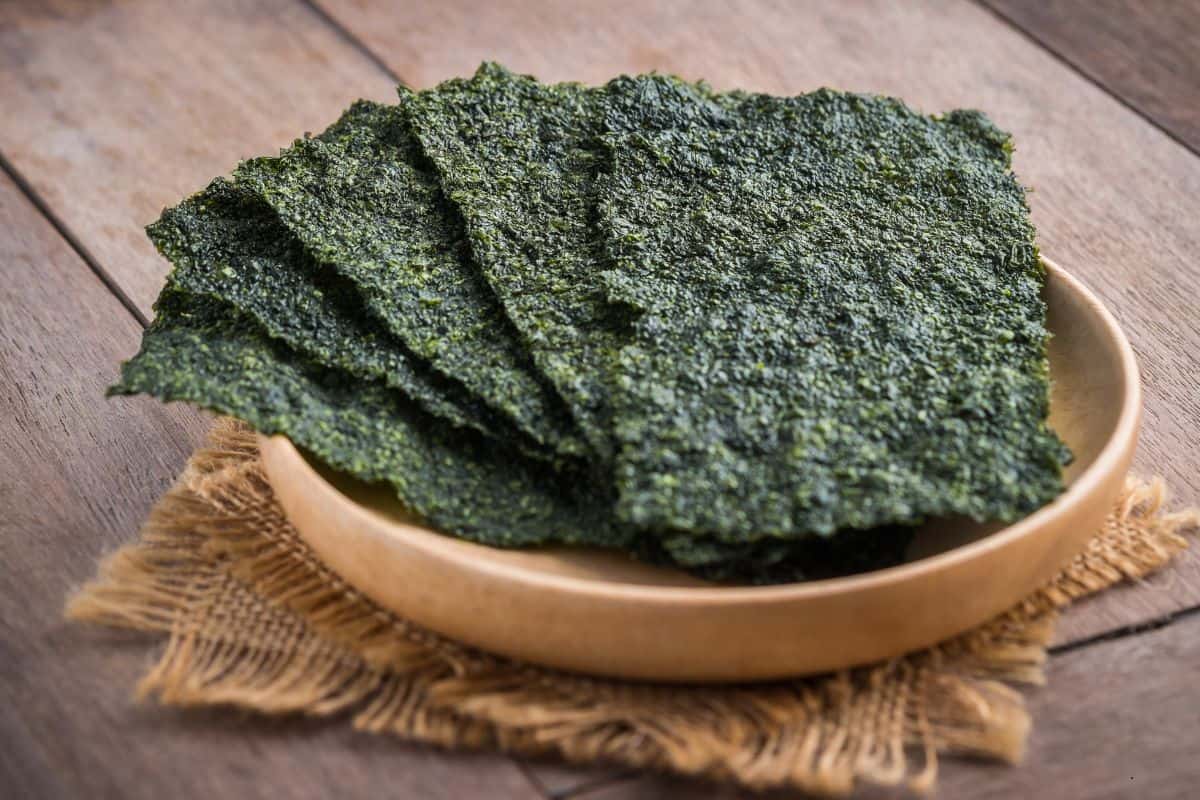
Jump to:
🍙 Understanding Gim
Origins and Cultural Significance
Gim has been a part of Korean cuisine for centuries. Originally, it was gathered by hand from rocks along the coast. This seaweed, part of the Pyropia genus, has been cultivated for its nutritional benefits and its importance in traditional meals.
In Korea, gim is often enjoyed with rice or as a side dish, and used in dishes like gimbap, where it's rolled with vegetables, rice, and sometimes meat or fish. This seaweed is more than just food; it holds cultural significance and is a staple in many Korean households.
Gim vs. Nori vs. Laver
There’s often confusion between gim, nori, and laver. Gim (김) is the Korean term for this dried seaweed, nori is used in Japanese cuisine and is similar to gim but may have slight differences in texture and taste, and laver is a more generic term used in English to describe this type of seaweed.
Gim is specifically roasted and sometimes seasoned with sesame oil and salt, making it distinct from nori, which might be plain or seasoned with different ingredients. While all these terms refer to similar types of seaweed, their usage and preparation can vary by region and culture.
Types of Gim
There are several varieties of gim. Parae gim is made from green algae and has a different texture and flavor; another is dol gim, which comes from red algae and has a richer taste.
Additionally, roasted seaweed is a popular option where gim is roasted and seasoned, making it crisp and savory. These varieties highlight the versatility of gim, making it a beloved snack and ingredient in various dishes.
Overall, gim is an integral part of Korean cuisine, celebrated for its distinct flavors, nutritional value, and cultural importance.
🍘 Nutritional Profile
Vitamins and Minerals
Gim is rich in various vitamins and minerals that are crucial for maintaining good health. It contains high levels of vitamin A, which is important for vision and immune function. Additionally, gim is a good source of vitamin C and E, both potent antioxidants that help protect cells from damage.
Significant amounts of minerals like iron, iodine, and potassium are also present. Iron supports the formation of red blood cells, while iodine is essential for thyroid function. Potassium helps regulate fluids and supports heart health. Gim also includes sodium, which should be consumed in moderation.
Health Benefits
Eating gim can provide numerous health benefits; It’s low in calories but high in protein and fiber, making it an excellent snack for those looking to manage their weight. The fiber in gim aids digestion and can help control blood sugar levels, which is beneficial for people with diabetes.
Gim's antioxidants help reduce inflammation, lower the risk of chronic diseases, and support heart health by helping to maintain healthy cholesterol levels. For vegetarians, gim is particularly useful as it provides essential nutrients that might otherwise be lacking in a plant-based diet.
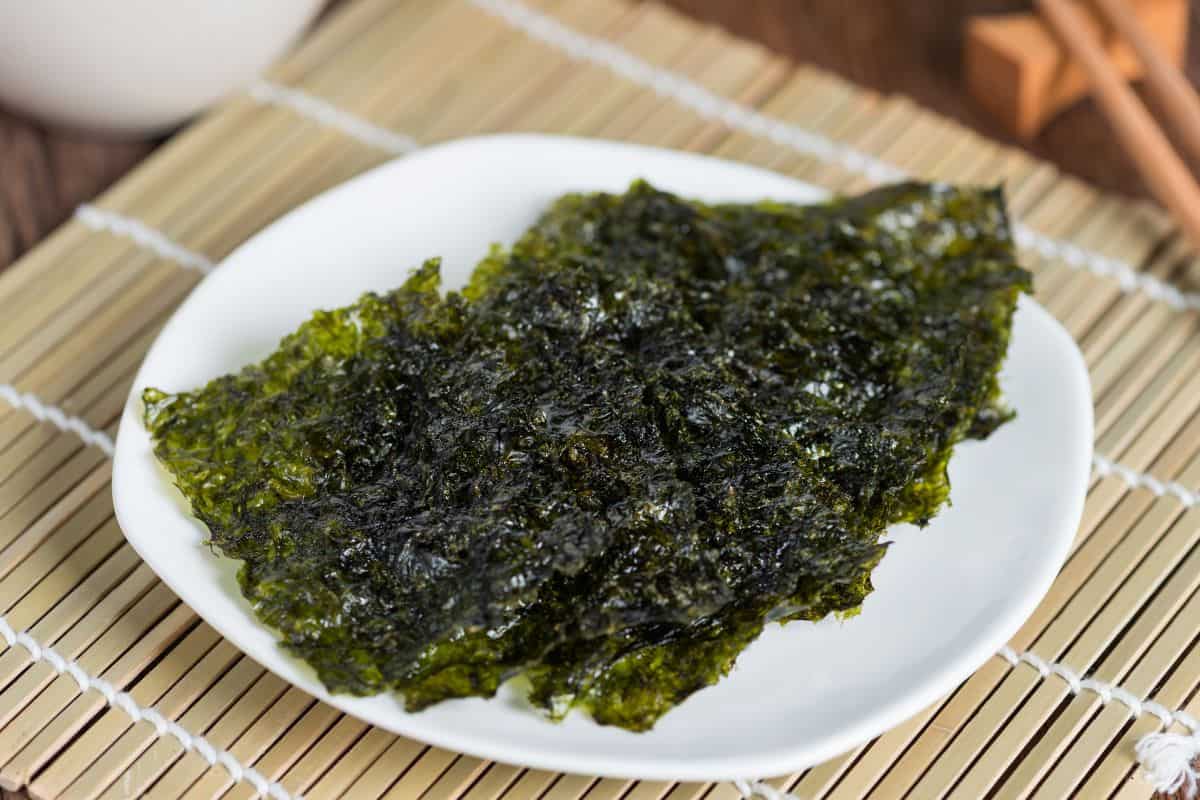
🤔 Production and Harvesting
Seaweed Farming Techniques
Farmers grow gim using aquaculture, which involves cultivating seaweed on floating rope racks in the ocean. These racks allow the seaweed to grow without being washed away by the sea currents.
The most commonly farmed species include Porphyra varieties like P. yezoensis and P. tenera. These species thrive in cold, clean waters and are particularly prized for their taste and nutritional value.
Farmers monitor the conditions of the water closely, ensuring that factors like temperature and salinity are optimal for seaweed growth. They harvest the seaweed typically during winter when the water is cold.
Processing and Drying
Once harvested, the seaweed undergoes a series of steps to become the crispy sheets known as gim. First, it is washed thoroughly to remove any sand or impurities.
Next, the seaweed is chopped finely and mixed with water before being spread onto bamboo mats or screens in thin layers. These layers are then pressed to remove excess water and ensure uniform thickness.
The pressed seaweed is dried either in the sun or using specialized drying machines. Once dried, the seaweed is usually roasted to enhance its flavor and make it crispy.
The final dried seaweed sheets are often seasoned with salt and sesame oil before packaging. This transformation from raw seaweed to the snack form involves careful attention to detail to maintain its nutritional benefits and enticing taste.
Preparation and Storage Tips
Gim is usually sold in dried sheets and should be kept in an airtight container in a cool, dry pantry. This prevents moisture from making the sheets soggy. If kept properly, gim can last for several months.
To prepare gim for cooking, lightly toast the dried sheets on a griddle or in a dry pan for a few seconds until they become crispy. Sesame oil or cooking oil can be brushed on for a richer flavor. For a bit of saltiness, sprinkling kosher salt after oiling can be ideal.
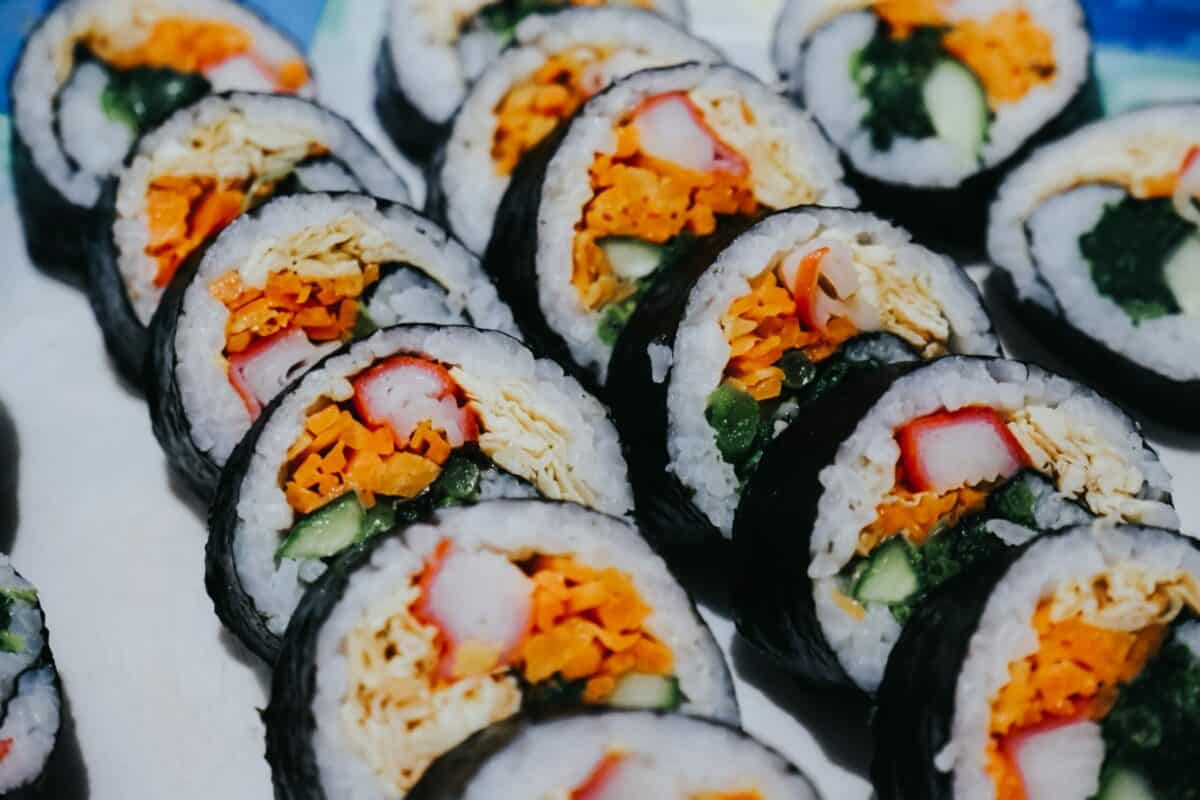
👩🍳 Culinary Uses
Traditional and Modern Recipes
Gim plays a crucial role in many Korean recipes. Gimbap is one of the most popular dishes that uses gim. It’s made by rolling rice, vegetables, and sometimes meat, in a sheet of gim.
Another traditional dish is jumeokbap, which is a rice ball often wrapped or sprinkled with gim for added flavor. Modern recipes include using gim as a wrap for various kinds of sushi or even as a topping on salads and soups to add a flavorful crunch.
Gim as a Snack and Side Dish
Gim is often enjoyed as a snack. It's usually toasted and lightly salted, making it a perfect accompaniment to beer. Korean meals often include gim as a side dish, or banchan, where it’s served crispy and seasoned.
This versatile ingredient can also be used to spruce up leftovers. For example, sprinkling crumbled gim over leftover rice instantly transforms it into a tasty treat.
Creative Ways to Enjoy Gim
There are plenty of creative ways to enjoy gim. It makes a great addition to salads, providing a unique texture and flavor. Some people use it to make seaweed snacks by baking them with different seasonings like sesame seeds or chili flakes. It's also a common garnish for soups and stir-fries.
Gim can even be used in fusion dishes, replacing nori in non-Korean recipes for an interesting twist. For storage, keep gim in an airtight container to maintain its crispness and prevent it from getting stale.
🛒 Shopping for Gim
Selecting Quality Seaweed Sheets
When choosing seaweed sheets, look for ones that are dark green and uniformly colored. Avoid sheets with holes or uneven patches, as these can indicate lower quality. It's also a good idea to check if the gim is labeled as USDA Organic or Non-GMO. Brands like Gimme offer organic, non-GMO seaweed snacks.
Consider the thickness of the seaweed. Thicker sheets are great for rolling kimbap, while thinner ones are better for snacking. Flavors also vary— some are roasted plain, while others might be seasoned. Popular choices include Korean roasted or seasoned dried seaweed, which can add a delicious twist to your dishes.
Locating Gim at Grocery Stores
You can usually find gim in the international or Asian section of many grocery stores. Stores that specialize in Korean food or Asian ingredients are more likely to have a variety of options. Look for brands that specialize in Korean ingredients to ensure authenticity.
Some stores even have fresh stocks of different seaweed sheets, like roasted or toasted seaweed. If you’re unsure where to look, don’t hesitate to ask a store employee for help. They can guide you to the right aisle or point out specific brands.
Online Purchase Options
Websites like Amazon offer a wide range of seaweed products for those who prefer shopping online. You can find brands known for high-quality gim, such as Gimme Seaweed. Shopping online also allows you to read reviews and compare prices easily. Many Amazon Associate links provide quick access to recommended products.
In addition to Amazon, specialty Korean food websites often sell various types of gim, from plain roasted seaweed to seasoned dried seaweed. These sites sometimes offer bulk buying options, which can be cost-effective if you enjoy seaweed regularly.
Shopping for gim can be simple and enjoyable if you know what to look for and where to find it. Quality, availability, and personal preference play crucial roles in the selection process.
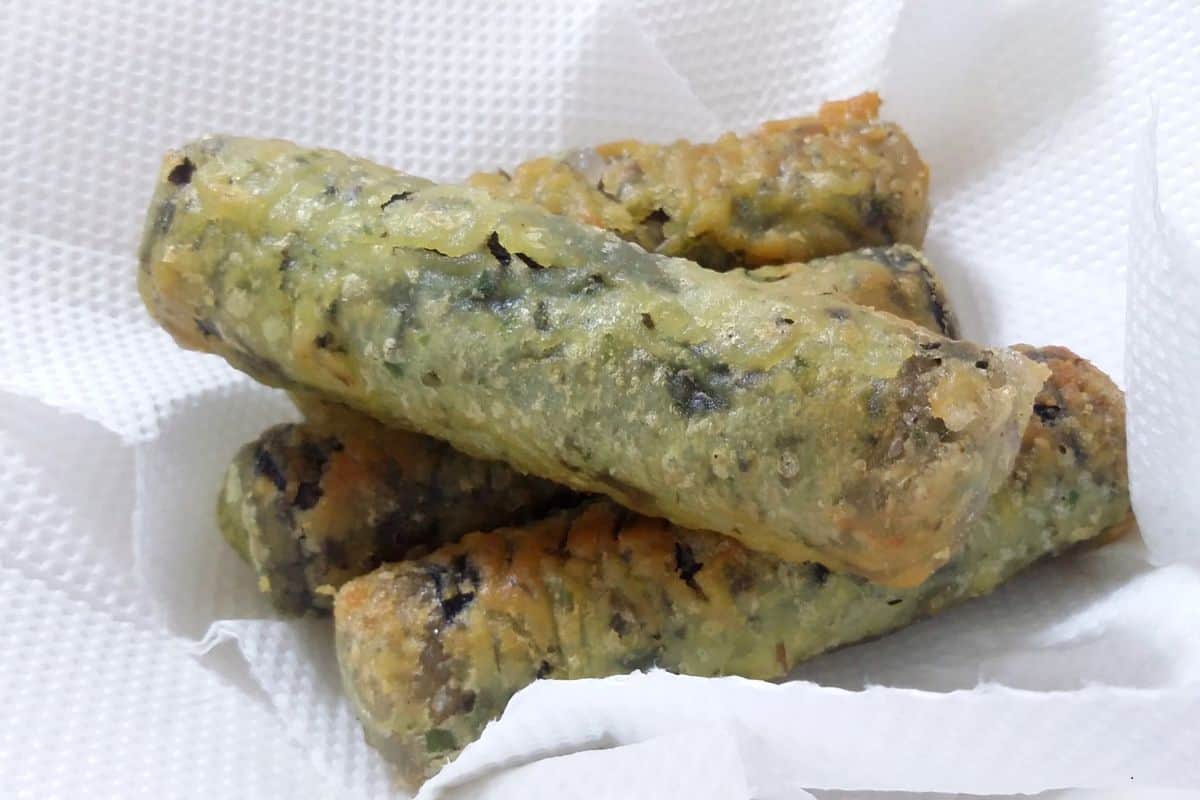
😋 Methods of Savoring Gim
Gim-Gui
One popular method is gim-gui (김구이), where gim is lightly toasted. This enhances its flavor and gives it a crispy texture. Simply brush it with a bit of oil and sprinkle some sea salt before toasting.
Korean Banchan
Gim is also commonly served as part of a Korean banchan. These are small side dishes served along with rice. Gim is often seasoned with sesame oil and salt, making it a tasty and healthy addition to any meal.
Jaerae Gim
Jaerae gim is a type of gim that's roasted and lightly salted. It's perfect for snacking right out of the package. Some people enjoy wrapping a small portion of rice in a sheet of jaerae gim for a simple yet delicious treat.
Rolled Gim Snacks
For a fun and creative snack, try rolling gim around various fillings. Common options include vegetables, rice, or even meats. These rolled snacks can be a hit, especially with kids.
As a Garnish
Gim can also be used as a garnish, adding a unique flavor to sushi, kimbap, and more. Its crispy texture is a nice contrast to softer ingredients.
❓ Frequently Asked Questions
Dried seaweed snacks, also known as gim, can be used in various ways. They’re great for wrapping rice and veggies or adding a crunchy texture to salads. You can also crumble them to sprinkle on soups or use them as a garnish for different dishes.
Roasted seaweed snacks can be eaten straight from the package. They’re light, crispy, and make a perfect low-calorie snack. You can also pair them with rice or use them to wrap small bites of food, like avocado slices or fermented vegetables, for added flavor.
Roasted seaweed is rich in vitamins and minerals, including vitamin A, vitamin B2, vitamin C, and vitamin D. It’s also high in antioxidants, which help protect cells from damage. Seaweed provides essential nutrients like potassium and has more vitamin A than eggs and more vitamin C than oranges.

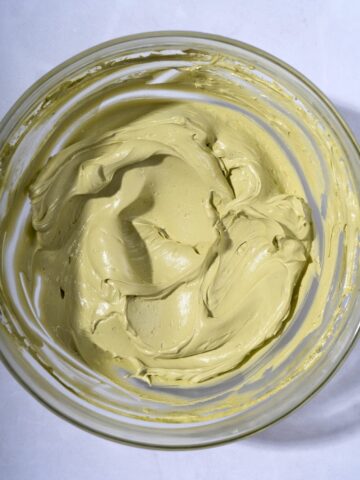
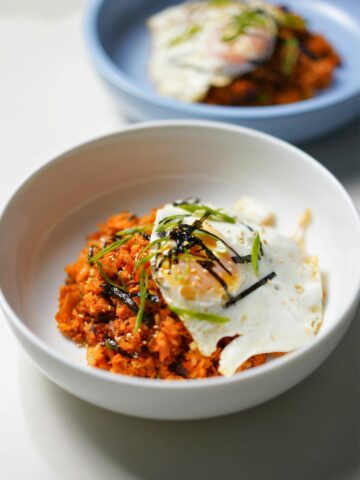
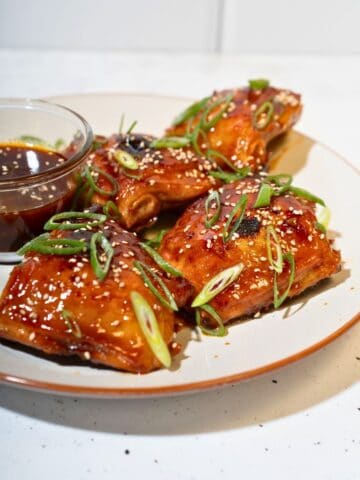
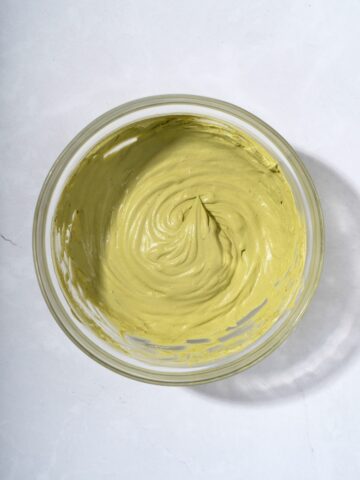
Comments
No Comments